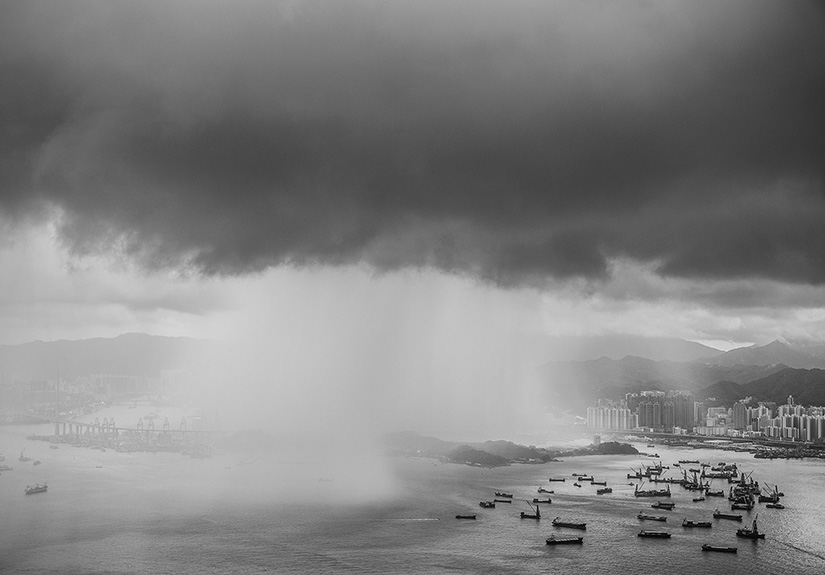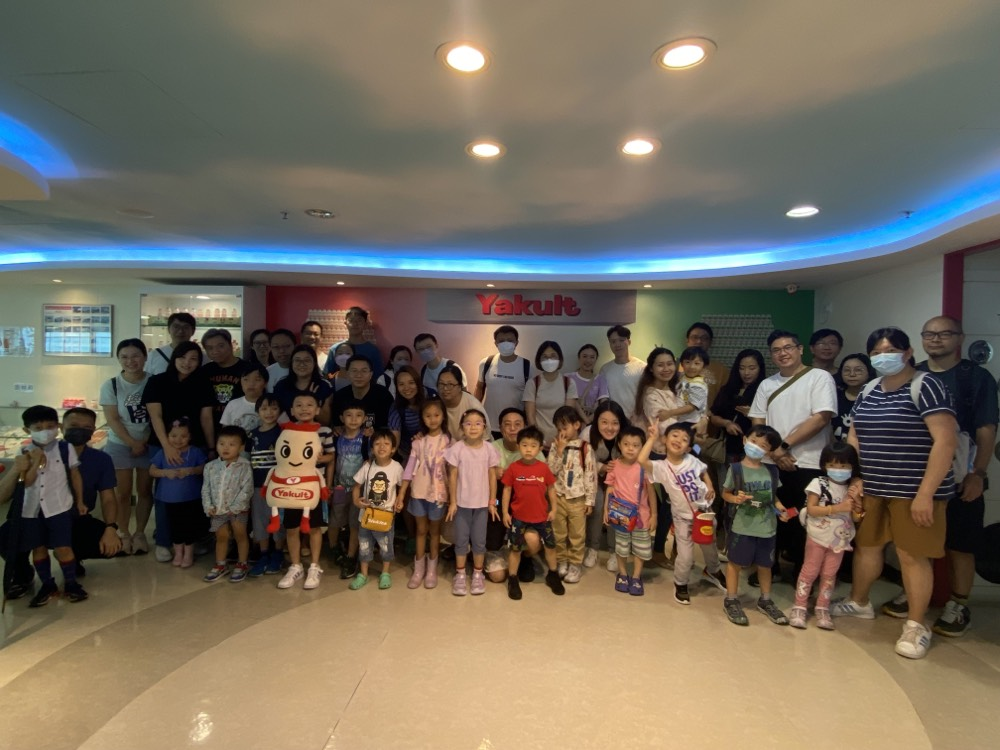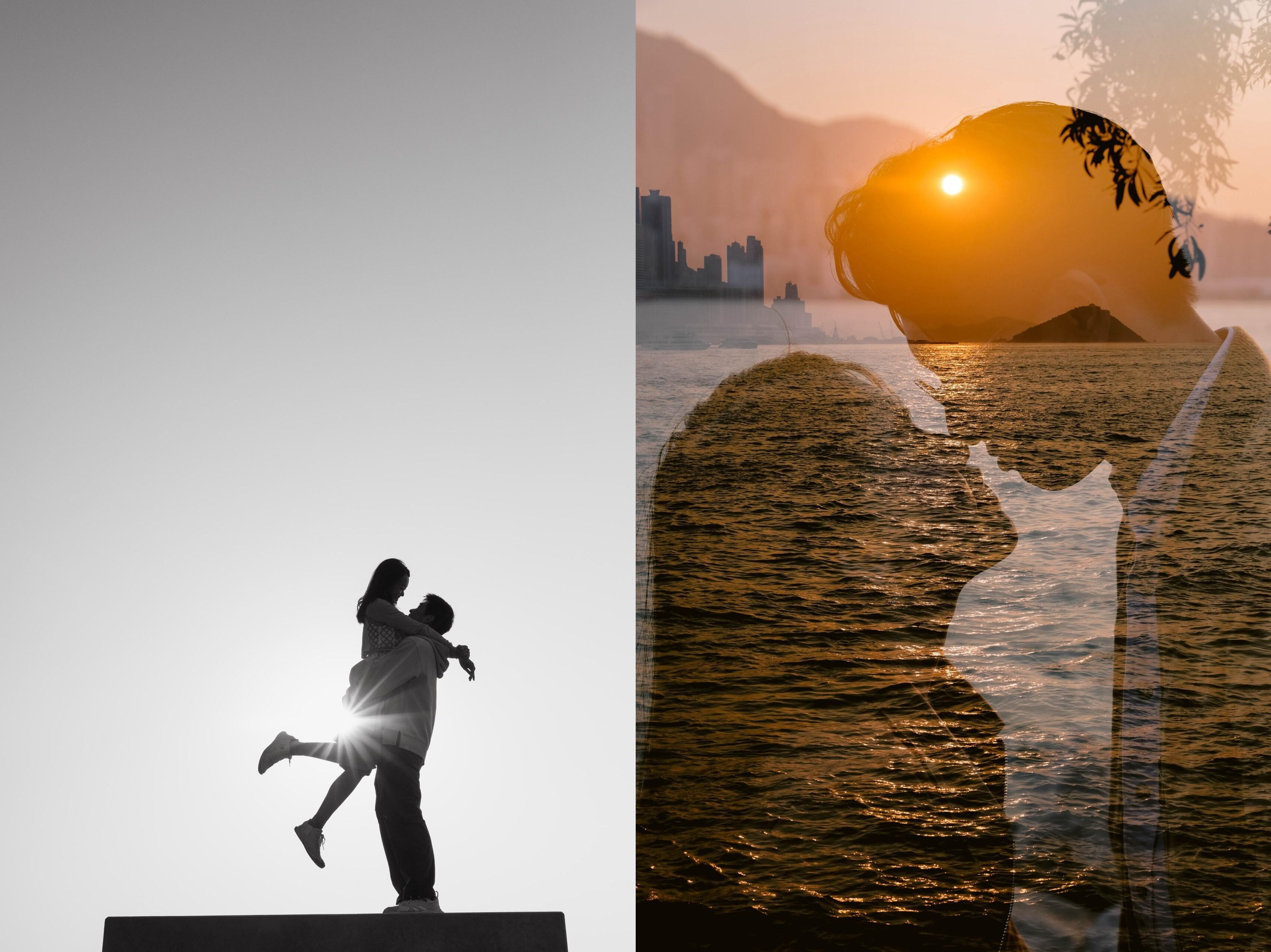Capture City Rainscape with a Twist
Summer is not only about hot sunny days. The blue sky landscape is of course enchanting, but capturing the city rainscape in the rainy and typhoon seasons can tell a different story of our place. Let’s check out how William Lau, a Club Canon member fond of cityscape photography, captures the unique rainy scenes of our city despite the adverse weather.
Rains at Night - A Unique Expression of Hong Kong
Influenced by his father, William has been interested in photography since he was a child. Today, he has accumulated over 20 years of experience in photography, with his shooting companion changing from EOS 5D to the new generation EOS 5D Mark IV. Among various photographic topics, William is especially fond of cityscapes, and more specifically, the enchanting light and shade of city in rains. “Normally people give up on taking photos when it rains. The fact that there are fewer rainy photos makes them more special. On rainy days, the reflection of surrounding scenery off the puddles of water formed on the uneven ground can give a twist to your photo. Besides, the color saturation of the photo is higher than usual, giving it a special kind of mood and vibe.”

Taken on an early morning of a rainy day, this photo captured the beautiful reflection of street lamps and sky off the puddles of water on the wooden floor and showed great sense of depth. A greater sense of color contrast between the orangish-yellow light and bluish architecture can be seen after HDR post-editing
Photo by William Lau; Photographed at the Central Government Offices “Door Always Open” in Admiralty
EOS 5D Mark II • TS-E 17mm f/4L • 1/8s • f/8 • ISO 400
Photo by William Lau; Photographed at the Central Government Offices “Door Always Open” in Admiralty
EOS 5D Mark II • TS-E 17mm f/4L • 1/8s • f/8 • ISO 400
Rainscapes at daytime and nighttime have their own charms, but William has a preference for night. “Big cities like Hong Kong and Tokyo are beautifully lit up at night with neon signs, street lamps, fa?ade lighting of buildings, etc. The raindrops in mid-air illuminated by these light sources can make a truly romantic and beautiful scene.” For composition, we can try shooting from a low angle to include the reflection off the wet ground. It would be more convenient to use a camera equipped with vari-angle monitor.

With the giant observation wheel and skyscrapers as backdrop, this photo captured the vivid reflection of colors on the wet ground. To capture a sharp image of the pedestrians, a fast shutter speed of 1/60s and high ISO setting were used
Photo by William Lau; Photographed at Central Pier
EOS 5D Mark II • EF 16-35mm f/2.8L II USM • 1/60s • f/2.8 • ISO 1600
Photo by William Lau; Photographed at Central Pier
EOS 5D Mark II • EF 16-35mm f/2.8L II USM • 1/60s • f/2.8 • ISO 1600
Capture Thunder and Lightning with a Special Landscape Backdrop
Summer is a rainy and typhoon season in Hong Kong. On bad weather days such as heavy downpour, always put your safety first. Never go shooting at unsheltered area when there is thunderstorm. Stay indoor or places with canopies or architectural shelters (such as on a footbridge). Regarding the shooting techniques in rainy days, William believes that it is very much like taking streetscapes. In addition to all the basic techniques, one should also pay attention to the shutter speed. Always adjust it to 1/100s or faster in order to capture clear spots of raindrops.

The heavy downpour was expressively captured under the illumination of the street lamps. The driver and bus station supervisor holding the umbrellas were nice touches to enhance the mood of the photo. Also the white balance setting should be adjusted to around 2000K due to the warm light of street lamps in Hong Kong
Photo by William Lau
EOS 5D Mark II • EF 16-35mm f/2.8L II USM • 1/160s • f/2.8 • ISO 3200
Photo by William Lau
EOS 5D Mark II • EF 16-35mm f/2.8L II USM • 1/160s • f/2.8 • ISO 3200
With thunder comes lightning. It takes good preparation and techniques to capture the swift moment when the lightning strikes. “Since it’s hard to predict where the lightning strikes, I would check the Hong Kong Observatory website for thunderstorm information before going. By having a rough idea of where the thunderstorm is likely to appear, I can then decide on the shooting location and plan for the composition on site.” William believes that composition is the key to a distinctive lightning photo as it is important to have a matching surrounding environment. “Same as the reason why we include human figure in a landscape photo, the lightning looks magnificent when it’s framed with buildings or landscape to show its size. Take the Central Pier as an example. Lightning shot taken there will look awesome with the observation wheel as foreground and skyscrapers as backdrops.” For camera settings, William suggests to set the aperture to f/8, shutter speed to 5 or 6 seconds and use continue shooting for a better chance to capture a successful shot.

The weather was very bad with heavy thunders and lightning on the day of shooting. After checking on the thunderstorm information, William went to Sheung Wan and kept shooting for about half an hour but still no good shot was captured, as the lightning didn’t strike within the predicted area. After hours of trying this shot was captured at around 4am or 5am
Photo by William Lau; Photographed near Shun Tak Centre at Sheung Wan
EOS 5D Mark II • EF 16-35mm f/2.8L II USM • 13s • f/10 • ISO 100
Photo by William Lau; Photographed near Shun Tak Centre at Sheung Wan
EOS 5D Mark II • EF 16-35mm f/2.8L II USM • 13s • f/10 • ISO 100
Compact and Lightweight Equipment for Rain Photography
William recommends the district around old Wan Chai Market and The Pawn for taking rain shots that are very Hong Kong. “Wan Chai is a district of old and new. The old residential buildings tong lau and trams are very photogenic. Central is also a good location too. The densely located modern architectures and the crowds of office workers crossing the road under their umbrellas can make a nice shot when photographed from above.”

This abstract shot capturing two pedestrians crossing the road coupled with the shadows and reflection on the wet rainy ground taken in black and white mode aimed to create mood and room for imagination
Photo by William Lau
EOS 5D Mark II • EF 16-35mm f/2.8L II USM • 1/80s • f/2.8 • ISO 1600
Photo by William Lau
EOS 5D Mark II • EF 16-35mm f/2.8L II USM • 1/80s • f/2.8 • ISO 1600
When it comes to equipment, William always goes for the lightweight and compact options as it is not preferable to change lenses on a rainy day. “I usually bring one camera and one lens, two at most, which are EOS 5D Mark IV, EF 24-70mm f/2.8L USM or EF 16-35mm f/2.8L II USM. The EF 24-70mm lens offers great flexibility as the focal range can meet the needs of various topics, while the EF 16-35mm lens offers a wide angle of view which is good for lightning as a wide shot can enhance the success rate of capturing the lightning in the composition. Besides, I also recommend TS-E 17mm f/4L tilt-shift lens for its sharp imaging and the ability to correct perspective distortion when photographing architecture.”
Although some of the cameras have already adopted a dust- and water-resistant design, it is still necessary to make sure that your equipment is well protected from water when shooting in the rains. William suggests to use a waterproof case for the camera, or use towel or plastic bag to wrap the body to minimize the chance of water getting into it. If there are raindrops on the lens, use a blower rather than a cleaning cloth to clean. If you want to use the lens cleaning wipes, use the disposable ones. Never wipe your lens with tissue paper as there are chances that the tiny fragment of tissue paper will get adhered to the lens.
Although some of the cameras have already adopted a dust- and water-resistant design, it is still necessary to make sure that your equipment is well protected from water when shooting in the rains. William suggests to use a waterproof case for the camera, or use towel or plastic bag to wrap the body to minimize the chance of water getting into it. If there are raindrops on the lens, use a blower rather than a cleaning cloth to clean. If you want to use the lens cleaning wipes, use the disposable ones. Never wipe your lens with tissue paper as there are chances that the tiny fragment of tissue paper will get adhered to the lens.



